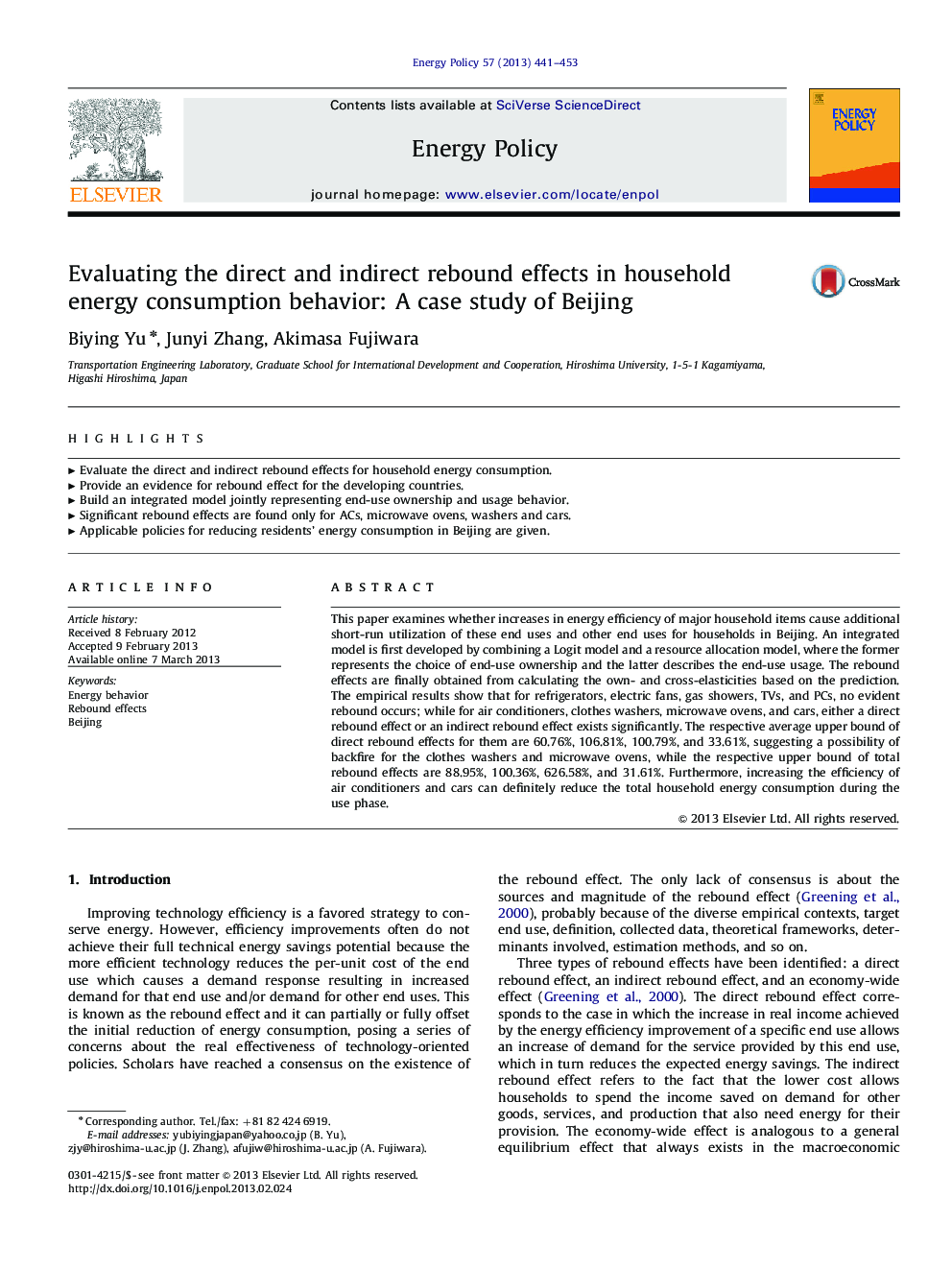| Article ID | Journal | Published Year | Pages | File Type |
|---|---|---|---|---|
| 992988 | Energy Policy | 2013 | 13 Pages |
This paper examines whether increases in energy efficiency of major household items cause additional short-run utilization of these end uses and other end uses for households in Beijing. An integrated model is first developed by combining a Logit model and a resource allocation model, where the former represents the choice of end-use ownership and the latter describes the end-use usage. The rebound effects are finally obtained from calculating the own- and cross-elasticities based on the prediction. The empirical results show that for refrigerators, electric fans, gas showers, TVs, and PCs, no evident rebound occurs; while for air conditioners, clothes washers, microwave ovens, and cars, either a direct rebound effect or an indirect rebound effect exists significantly. The respective average upper bound of direct rebound effects for them are 60.76%, 106.81%, 100.79%, and 33.61%, suggesting a possibility of backfire for the clothes washers and microwave ovens, while the respective upper bound of total rebound effects are 88.95%, 100.36%, 626.58%, and 31.61%. Furthermore, increasing the efficiency of air conditioners and cars can definitely reduce the total household energy consumption during the use phase.
► Evaluate the direct and indirect rebound effects for household energy consumption. ► Provide an evidence for rebound effect for the developing countries. ► Build an integrated model jointly representing end-use ownership and usage behavior. ► Significant rebound effects are found only for ACs, microwave ovens, washers and cars. ► Applicable policies for reducing residents' energy consumption in Beijing are given.
